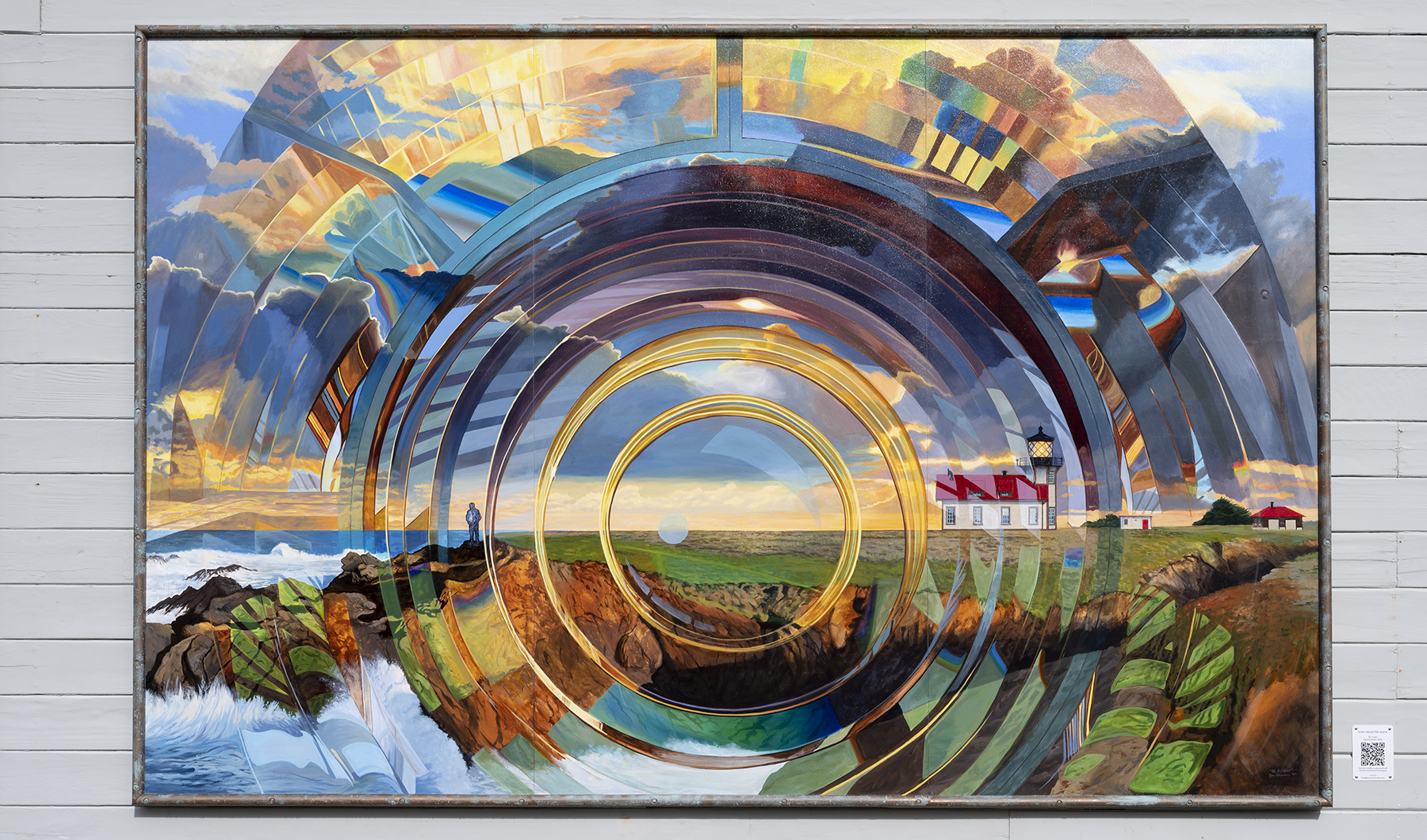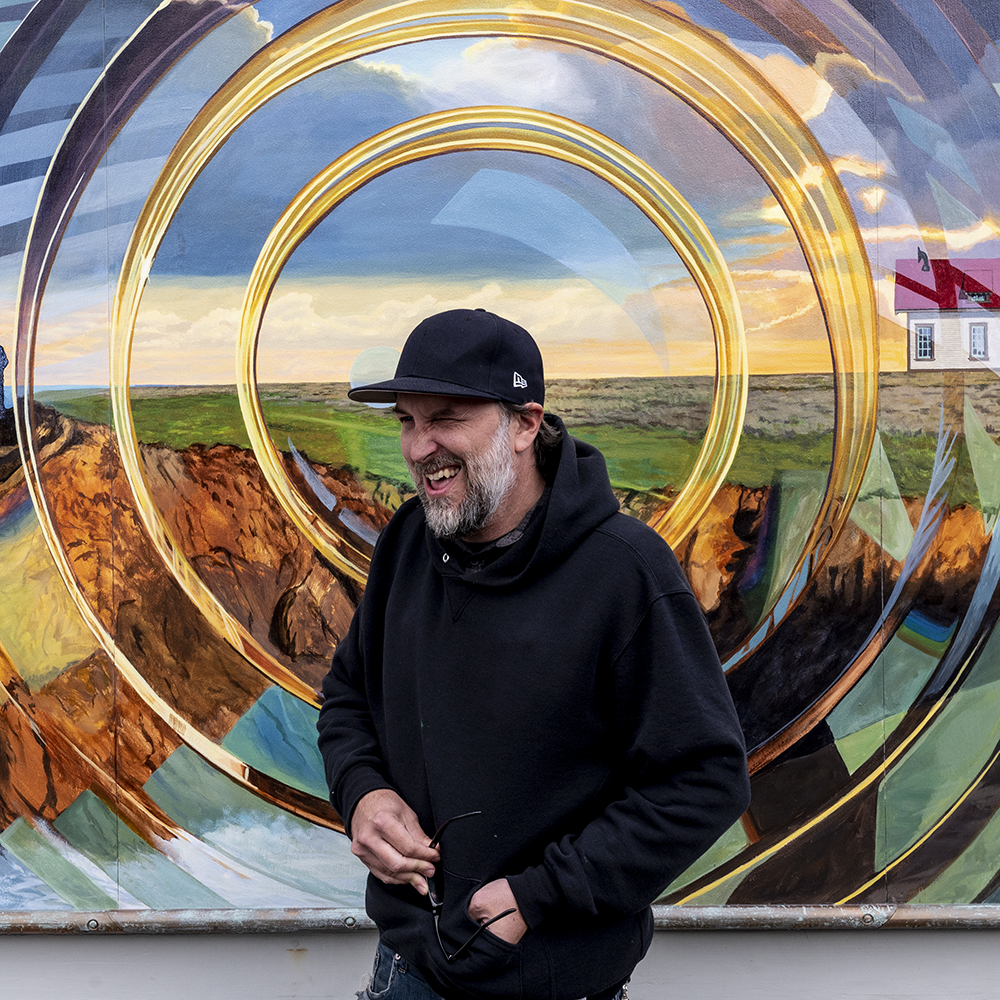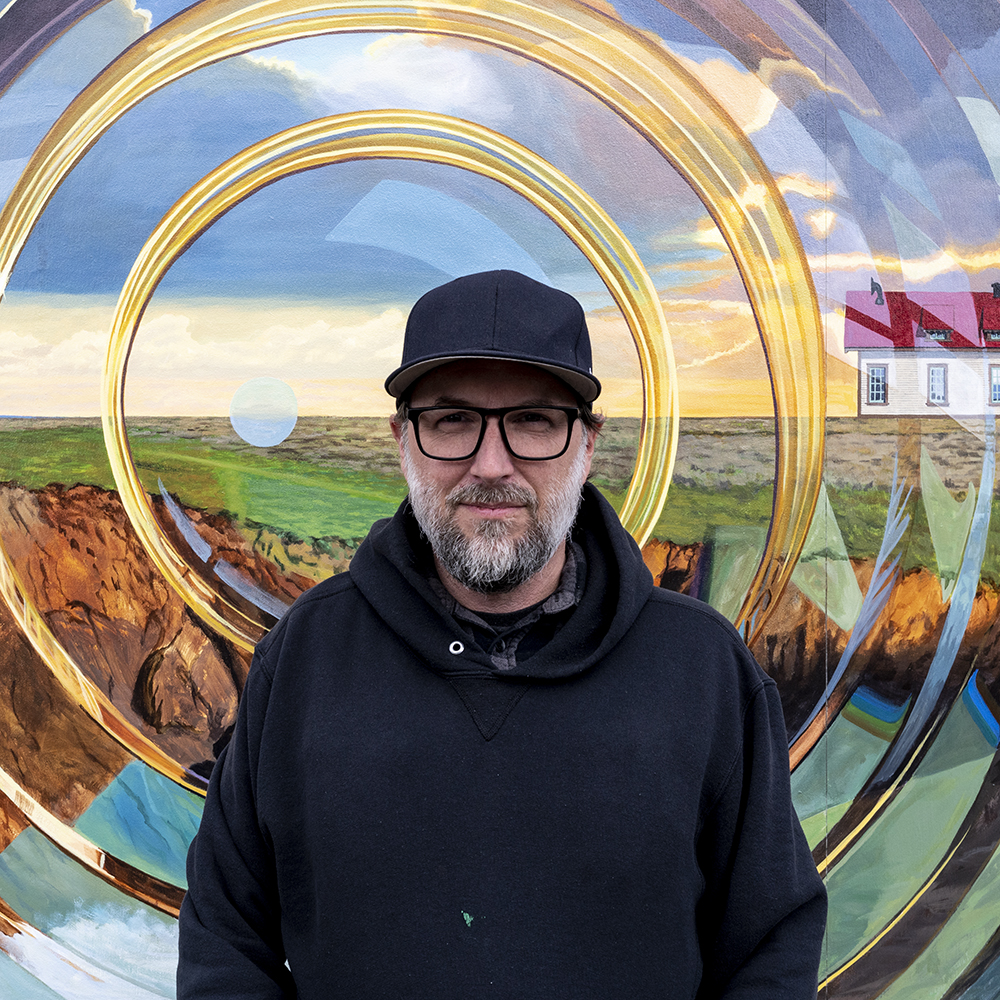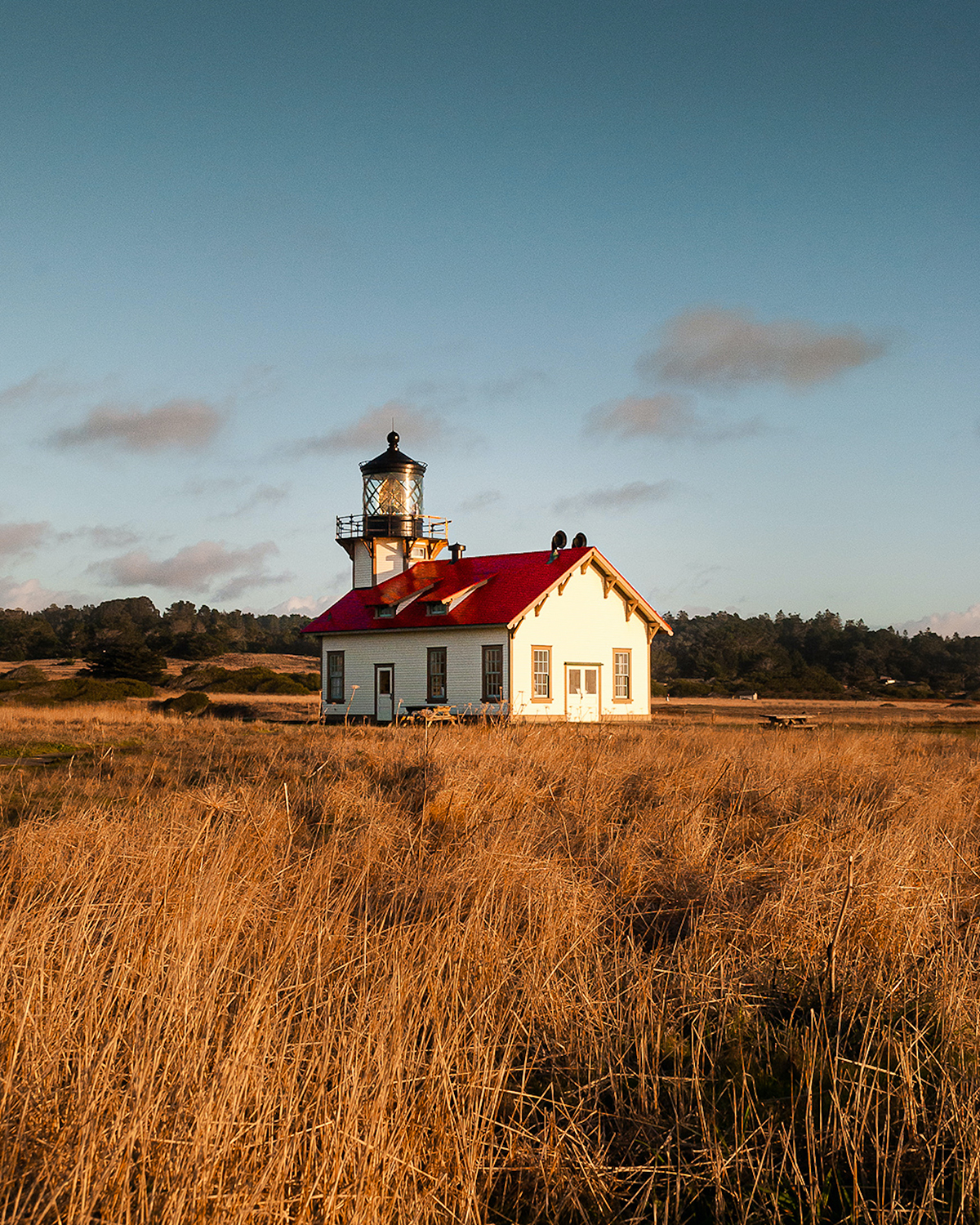
TITLE:
BE A LIGHT
Artist: Ryan Grossman
Location: The south-facing wall of 300 N Franklin St. (Along Redwood Ave.)
Ryan came to the Mendocino coast from San Francisco in 2015. He is a graduate of the Academy of Art University where he studied oil painting. Originally from the Pacific Northwest, he’s been heavily influenced by the visual power of seascapes and the increasing effects of climate change. His subtle narratives and symbolism drive his representational paintings often with a surreal or dreamlike quality.



The Inspiration
The gift of this mural is intended to honor Ronald Reiter. He was in his element along the Mendocino coast and could stand for hours on a headland, taking it all in. He never missed a chance to visit a lighthouse, particularly those with Fresnel lenses. He was fascinated by their science and art. On a tour at the Mendocino lighthouse, he soaked up the volunteers’ words and enthused about the polished brass and circling prisms, his eyes reflecting the glow.He was, himself, a light in the world. He spent his career working to prevent companies from fleecing consumers. Here are some examples: He prosecuted cases against companies, among others, that lied and tricked low-income consumers into signing liens on their homes. He filed dozens of amicus and other appellate briefs with state and federal courts and occasionally the U.S. Supreme, for example, to insure companies exploiting their workers couldn’t falsely tout their fine treatment of workers in their ads. He lobbied the legislature, on behalf of the California Attorney General, to pass laws more protective of consumers, for example, to prosecute so-called foreclosure consultants, or to prohibit auto dealers from making misleading claims based on “invoice prices.” He helped consumer protection prosecutors and legal aid attorneys and private attorneys across the state to realize the potential in California’s consumer protection laws to make a difference for the public.
So his light still shines.
The mural’s radiance honors his light and reminds us that we, too, can be a light.
Artists Quote
“When I was approached about the subject of this mural being Point Cabrillo Lighthouse, I wanted to honor not only Margaret’s husband Ron and the lighthouse itself in the vastness of the Point Cabrillo headlands, but particularly the Fresnel lens while keeping the creativity, emotionality and personal perspective that I present in my work and how to convey that into the very public format of a mural.
By arriving at the composition of the Fresnel lens overlaying the landscape of the headlands, I invite the viewer of the mural to be both inside the light of the lighthouse as well as view the lighthouse they are within-thus creating a tension of placement and a suspension of reality and the symbolic opportunity to “be a light”.
I like to think of each panel representing Past, Present, and Future. The figure on the bluff with the universe emanating from within represents the light of the past and the light of Margaret’s husband Ron. The lighthouse, the beacon to the future; the light in the dark showing the way. The circular, focused center of the lens in the middle panel being the in-between, the cycle, the present.
I hope it not only inspires curiosity and awe of the lighthouse and headlands but also reminds viewers to be a positive force in the world, a light in the dark. Thanks to the Fort Bragg Alleyway Mural Project and Margaret Reiter for giving me this opportunity to explore and expand my creativity. “
The Point Cabrillo Lighthouse
The historic Point Cabrillo Lighthouse was first lit on June 10 of 1909, and continues to shine today with its original Fresnel lens. The Fresnel lens was invented in the early 1800s by French engineer Augustin-Jean Fresnel. His invention revolutionized the world of light technology and his lens became the gold standard for lighthouses across the globe. The Point Cabrillo Lighthouse features a third order Fresnel lens, made up of 150 individual prisms that work together to direct light into beams that shine out toward the horizon. The ten second flash from the lighthouse can be seen for more than 13 miles out to sea.
Point Cabrillo Lighthouse was established as a navigational beacon, providing a waypoint for the lumber schooners traveling north and south along the Mendocino Coast. Originally lit with wicks and kerosene, the lens now uses a 1000 watt halogen bulb as its light source, and is operated as an Active Aid to Navigation by the United States Coast Guard. The grounds at Point Cabrillo Light Station State Historic Park are maintained and managed through a partnership between California State Parks and the Point Cabrillo Lightkeepers Association, a 501(c)3 organization dedicated to preservation and education at the lighthouse.
The Point Cabrillo Light Station State Historic Park is located halfway between the towns of Fort Bragg and Mendocino, on Point Cabrillo Drive. The museums and gift shop are staffed by volunteers and are open every day of the year from 11am – 4pm. Learn more about Point Cabrillo by visiting www.pointcabrillo.org.

